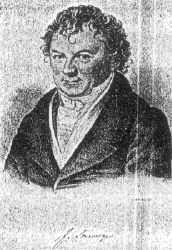5.1: The Group 12 Elements
- Page ID
- 212637
Although the Group 12 metals (Table \(\PageIndex{1}\)) are formally part of the d-block elements from their position in the Periodic Table, their electronic configuration in both their elemental form (d10s2) and the vast majority of their compounds (d10) is that of the main group elements. The common oxidation state for all the Group 12 elements is +2, and the chemistry of zinc and cadmium compounds in particular is very similar to the analogous magnesium derivatives.
Note
The IUPAC (International Union of Pure and Applied Chemistry) definition of a transition metal (or transition element) states that a transition metal is "an element whose atom has an incomplete d sub-shell, or which can give rise to cations with an incomplete d sub-shell." Thus, Group 12 elements are not transition metals.
| Element | Symbol | Name |
| Zinc | Zn | From German zinke, meaning tooth-like, pointed or jagged (metallic zinc crystals have a needle-like appearance), or meaning tin-like because of its relation to German word zinn meaning tin, or from Persian seng meaning stone. |
| Cadmium | Cd | From the Latin cadmia, meaning calamine |
| Mercury | Hg | From the Latin hydrargyrum, meaning watery or liquid silver |
Table \(\PageIndex{1}\): Derivation of the names of the Group 12 metals.
Discovery
Zinc
Artifacts with a high zinc content (as much as 90%) have been fond to be over 2500 years old, and possibly older. As such it is clear that several cultures had the knowledge of working with zinc alloys, in particular brass (a zinc/copper alloy). Zinc mines at Zawar, near Udaipur in India, have been active since the late 1st millennium BC. However, the smelting of metallic zinc appears to have begun around the 12th century AD.
The isolation of purified metallic zinc was reported concurrently by several people. The extraction of zinc from its oxide (ZnO) was reported as early as 1668, while John Lane is supposed to have smelted zinc in 1726. The first Patent for zinc smelting was granted to English metallurgist William Champion in 1738; however, the credit for discovering pure metallic zinc is often given to Andreas Marggraf in 1746.

Cadmium
Cadmium was discovered in 1817 by Friedrich Stromeyer as an impurity in calamine (zinc carbonate, ZnCO3). Stromeyer observed that impure samples of calamine changed color when heated but pure calamine did not. Eventually he was able to isolate cadmium metal by roasting and reduction of the sulfide.

Mercury
Mercury was known to the ancient Chinese and was found in Egyptian tombs that date from 1500 BC. In China and Tibet, mercury use was thought to prolong life, heal fractures, and maintain generally good health. The ancient Greeks used mercury in ointments; the ancient Egyptians and the Romans used it in cosmetics that sometimes deformed the face.
Abundance
The Group 12 elements mainly occur in sulfide ores, however, as with their Group 2 analogs, carbonate are known, but not as economically viable. The major zinc containing ore is zinc blende (also known as sphalerite), which is zinc sulfide (ZnS). Other important ores include, wurtzite (ZnS), smithsonite (zinc carbonate, ZnCO3), and hemimorphite (calamine, Zn2SiO4). The basic form of zinc carbonate (hydrozincite, Zn5(CO3)2(OH)6) is also mined where economically viable. The main source of cadmium is as an impurity in zinc blende; however, there are several other ores known, e.g., cadmoselite (cadmium selenide, CdSe) and otavite (CdCO3). Mercury sulfide (cinnabar, HgS) is the major source of mercury, and in fact metallic liquid mercury droplets are often found in the ore. The terrestrial abundance of the Group 12 elements is given in Table \(\PageIndex{2}\).
| Element | Terrestrial abundance (ppm) |
| Zn | 75 (Earth’s crust), 64 (soil), 30 x 10-6 (sea water) |
| Cd | 0.1 (Earth’s crust), 1 (soil), 1 x 10-6 (sea water) |
| Hg | 50 x 10-6 (Earth’s crust), 2 x 10-8 (soil), 40 x 10-12 (sea water) |
Table \(\PageIndex{2}\): Abundance of Group 12 elements.
Isotopes
The naturally abundant isotopes of the Group 12 metals are listed in Table \(\PageIndex{3}\).
| Isotope | Natural abundance (%) |
| Zinc-64 | 48.6 |
| Zinc-66 | 27.9 |
| Zinc-67 | 4.1 |
| Zinc-68 | 18.8 |
| Zinc-70 | 0.6 |
| Cadmium-106 * | 1.25 |
| Cadmium-108 * | 0.89 |
| Cadmium-110 | 12.49 |
| Cadmium-111 | 12.8 |
| Cadmium-112 | 24.13 |
| Cadmium-113 * | 12.22 |
| Cadmium-114 * | 28.73 |
| Cadmium-116 * | 7.49 |
| Mercury-196 | 0.15 |
| Mercury-198 | 9.97 |
| Mercury-199 | 16.87 |
| Mercury-200 | 23.1 |
| Mercury-201 | 13.18 |
| Mercury-202 | 29.86 |
| Mercury-204 | 6.87 |
Table \(\PageIndex{3}\): Abundance of the major (non-synthetic) isotopes of the Group 12 metals. Isotopes labeled with * are radioactive.
Many radioisotopes of zinc have been characterized. Zinc-65 that has a half-life of 244 days, is the most long-lived isotope, followed by 72Zn with a half-life of 46.5 hours. The most common decay mode of an isotope of zinc with a mass number lower than 64 is electron capture, producing an isotope of copper, (Equation 5.1.1).
\[ ^{30}_n\text{Zn} + \text{e}^- \rightarrow ^{29}_n\text{Cu}\]
T he most common decay mode of an isotope of zinc with mass number higher than 64 is beta decay (β–), which produces an isotope of gallium, (Equation 5.1.2).
\[ ^{30}_n\text{Zn} \rightarrow ^{31}_n\text{Ga} + \text{e}^- + \nu_e\]
Naturally occurring cadmium is composed of 8 isotopes. For two of them, natural radioactivity was observed, and three others are predicted to be radioactive but their decay is not observed, due to extremely long half-life times. The two natural radioactive isotopes are 113Cd (half-life = 7.7 x 1015 years) and 116Cd (half-life = 2.9 x 1019 years).
There are seven stable isotopes of mercury with the longest-lived radioisotopes being 194Hg (half-life = 444 years) and 203Hg (half-life = 47 days). 199Hg and 201Hg are the most often studied NMR-active nuclei, having spins of 1/2 and 3/2 respectively.
Properties
A summary of the physical properties of the Group 12 metals is given in Table \(\PageIndex{4}\). Because of the ns electron in the Group 12 metals are tightly bound, and hence relatively unavailable for metallic bonding, the metals are volatile with low boiling points, as compared to the Group 2 metals.
| Element | Mp (°C) | Bp (°C) | Density (g/cm3) |
| Zn | 419.53 | 907 | 7.14 |
| Cd | 321.07 | 767 | 8.65 |
| Hg | -38.83 | 356.73 | 13.534 (liquid) |
Table \(\PageIndex{4}\): Selected physical properties of the Group 12 metals.
The most notable anomaly in the Group 12 metals is the low melting point of mercury compared to zinc and cadmium. In order to completely understand the reasons for mercury’s low melting point quantum physics is required; however, the key point is that mercury has a unique electronic configuration, i.e., [Xe] 5d 6s. The stability of the 6s shell is due to the presence of a filled 4f shell, because an f shell poorly screens the nuclear charge that increases the attractive coulomb interaction of the 6s shell and the nucleus. Such a configuration strongly resists removal of an electron and as such mercury behaves similarly to noble gas elements, which form weakly bonded and thus easily melting solids.

Industrial production
The vast majority (95%) of zinc is mined from of the zinc sulfide ores. The zinc is most often mixed with copper, lead, and iron. Zinc metal is produced by extraction, in which the ore is ground and then the minerals are separated from the gangue (commercially worthless mineral matter) by froth flotation (a process for selectively separating hydrophobic materials from hydrophilic). Roasting converts the zinc sulfide concentrate produced to zinc oxide (Equation 5.1.3). Reduction of the zinc oxide with carbon (5.1.4) or carbon monoxide (5.1.5) at 950 °C into the metal is followed by distillation of the metal. Since cadmium is a common impurity in zinc ores, it is most often isolated during the production of zinc. Cadmium is isolated from the zinc metal by vacuum distillation if the zinc is smelted, or cadmium sulfate is precipitated out of the electrolysis solution.
\[ \text{2 ZnS + 3 O}_2 \rightarrow \text{2 ZnO + 2 SO}_2 \]
\[ \text{2 ZnO + C} \rightarrow \text{2 Zn + CO}_2\]
\[ \text{2 ZnO + 2 CO} \rightarrow \text{2 Zn + 2 CO}\]
Mercury is extracted by heating cinnabar (HgS) in a current of air, Equation, and condensing the vapor.
\[ \text{HgS + O}_2 \rightarrow \text{Hg + SO}_2\]


